Up close with the tribes of Ethiopia’s imperiled Omo Valley
Dams and overtourism threaten the Omo Valley, but a sustainable travel initiative offers an intimate experience with local peoples
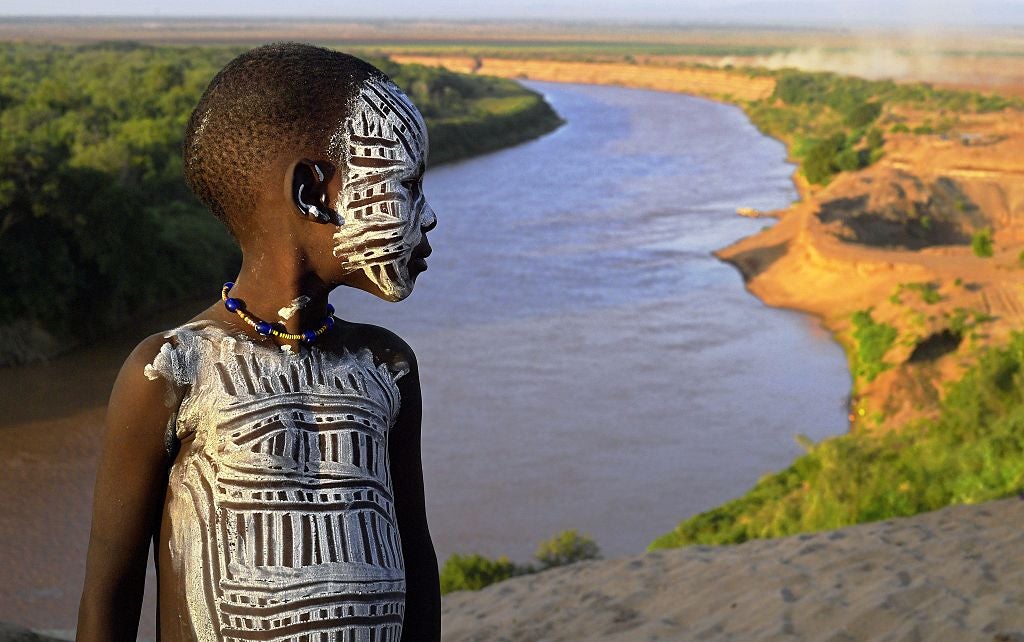
Your support helps us to tell the story
From reproductive rights to climate change to Big Tech, The Independent is on the ground when the story is developing. Whether it's investigating the financials of Elon Musk's pro-Trump PAC or producing our latest documentary, 'The A Word', which shines a light on the American women fighting for reproductive rights, we know how important it is to parse out the facts from the messaging.
At such a critical moment in US history, we need reporters on the ground. Your donation allows us to keep sending journalists to speak to both sides of the story.
The Independent is trusted by Americans across the entire political spectrum. And unlike many other quality news outlets, we choose not to lock Americans out of our reporting and analysis with paywalls. We believe quality journalism should be available to everyone, paid for by those who can afford it.
Your support makes all the difference.“Your George W Bush came here two years ago and not a person recognised him.”
“No one?”
“No one knew who he was.”
“Would they have known Nelson Mandela?”
“No. No one here would have seen TV. No one here thinks beyond Omo.”
I’m speaking with Lale Biwa, a member of the Karo people, in Ethiopia’s Omo Valley. We are surrounded by low, circular huts made from sticks, with pitched grass roofs, in his home village of Dus, on the banks of the Omo River.
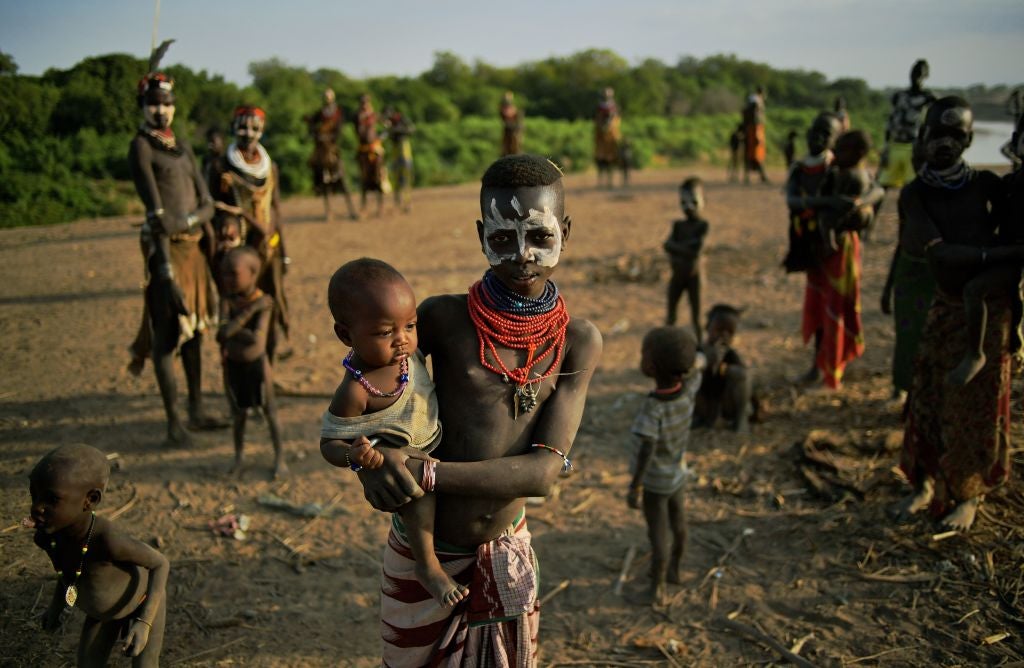
A woman, heavily adorned in beads and bracelets, grinds sorghum on a large stone in the nearby shade. Men, some carrying AK-47s, sit in clusters. Small naked children scamper past. Goats and cattle are roaming freely on the dusty flood plain. The village has no electricity, no running water, no cars. Biwa, who guesses his age to be “about 40”, looks around. “It is a good place,” he says. “The people are true.”
I had come to the Omo Valley with innovative tourism entrepreneur Will Jones to get a view into the lives of some of Africa’s most traditional tribes. “I’m particularly interested in the Omo,” Jones told me. “It’s an at-risk ecosystem, with at-risk communities. But it is still a very wild place.”
Jones was born in Nigeria to English parents, raised in East Africa and educated in England. “When it came time to put on a suit and go into town,” he says, “I came back to Africa.”
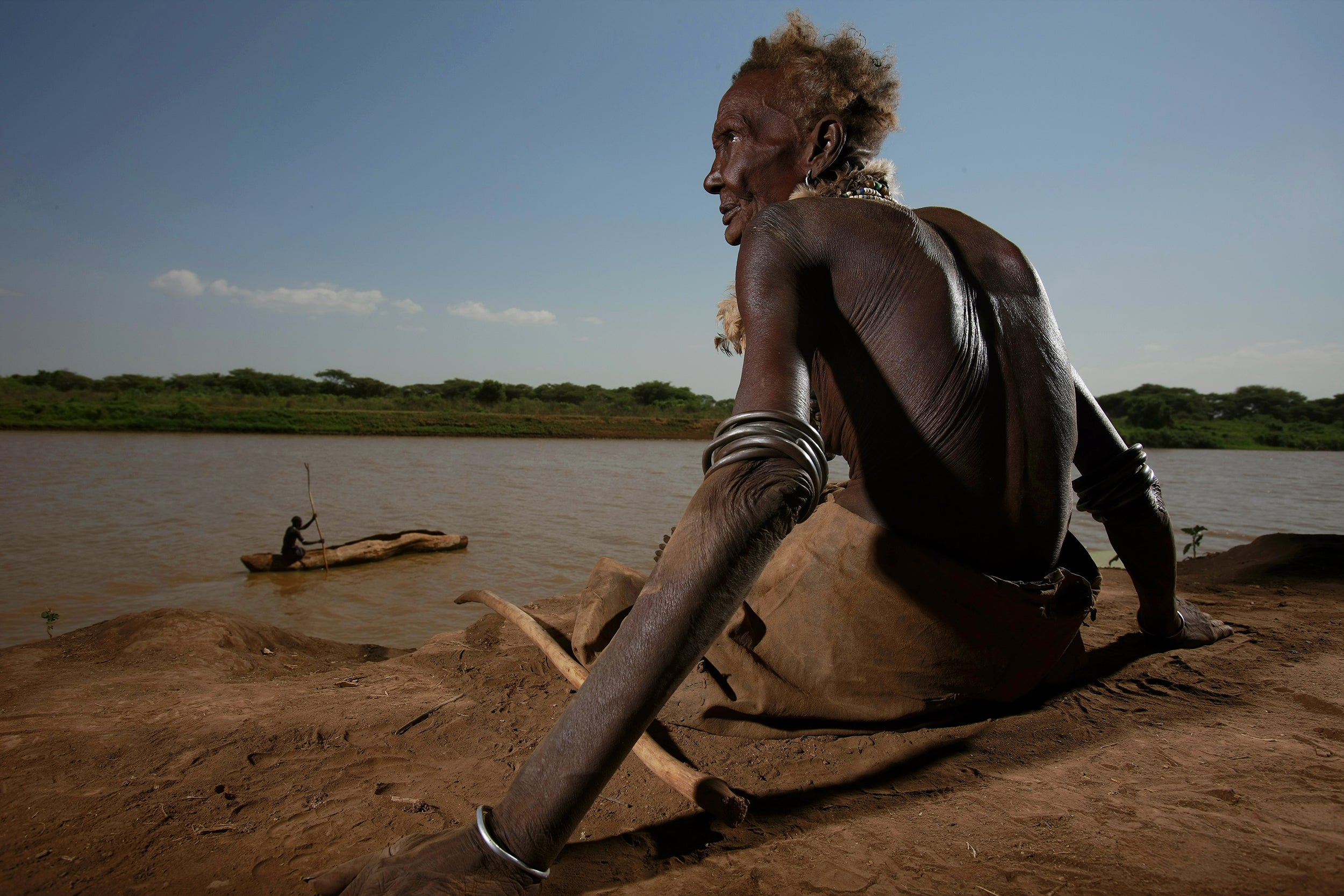
Jones, 45, has been creating customised tours to the continent for more than 20 years. Wild Philanthropy is his latest venture – an enterprise designed to build sustainable tourism with a mutually beneficial exchange between visitors and the people and land they visit. Jones also operates the only permanent tented camp in the Omo Valley, not far from Biwa’s village.
This south-western corner of Ethiopia is home to seven primary tribes who coexist with varying degrees of peace. The land is largely dry savanna, with the Omo River cutting a nearly 475-mile swathe down to Lake Turkana on the Kenya border. The discovery of human remains dating back nearly 2.5 million years prompted UNESCO to dub the Lower Valley a World Heritage site in 1980.
But today the Omo is a region on the precipice. The Ethiopian government has recently completed the third of five proposed dams upriver. The dams threaten to alter the lives of the communities that have inhabited this valley and depend on the river’s moods for survival.
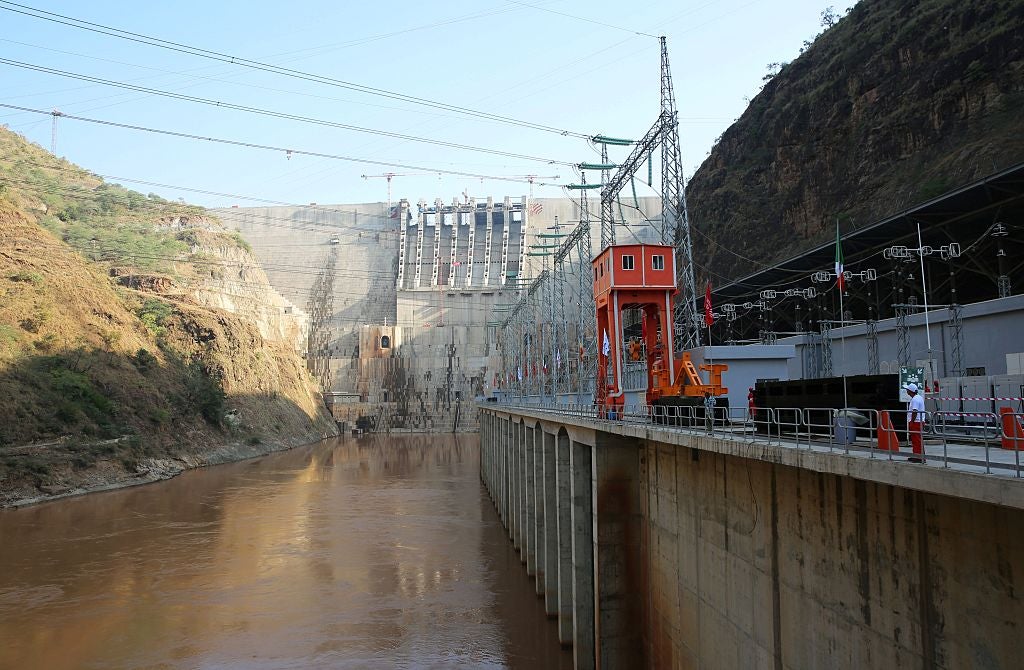
“This was the second year in a row that the flood crop failed,” Jones tells me. “It is the only time anyone can remember that the river never rose.”
The area has also fallen victim to hit-and-run tourism – people driving down from Addis Ababa, storming into villages, cameras blazing, then leaving in a cloud of dust. I encountered one such scrum at a local festival. Witnessing the feverish pursuit for documentation of “otherness” reflected back at me my own motives for being there. It is an issue every traveller to remote or indigenous regions needs to reconcile.
“There is a circuit of exploitation here,” Jones sayus. “It’s one of the reasons we cultivate relationships with the local people, trading with them, trying to create a mutually beneficial exchange. And it’s why we’re primarily using the river as our road. The river allows us access to villages inaccessible any other way.”
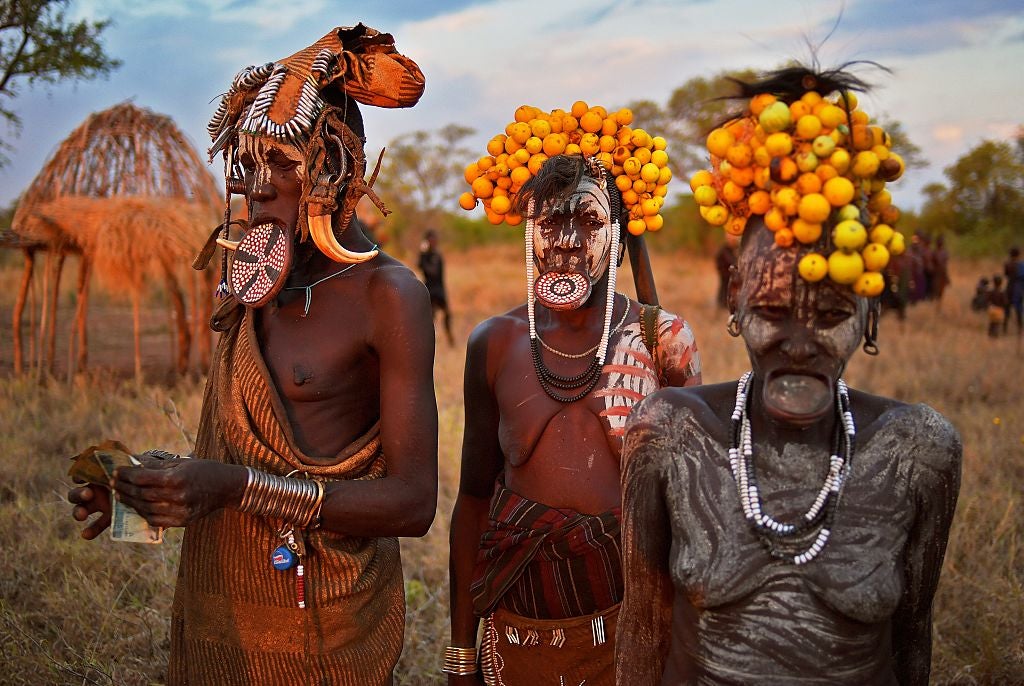
In the six days we spend on the river we see only one other motorised boat, carrying supplies for an NGO downriver.
With Biwa as our guide, we head to a small village inhabited by the Hamar people. The Hamar, numbering 45,000 throughout the valley, are known to be pastoralists. The village was overflowing with cattle. As in Dus, the dwellings were simple, built of sticks and grass, and well-ordered. Young men tend cattle while a woman skins and butchers a goat with the help of her toddler, who hangs pieces of the animal on a fence beside an AK-47 and a belt of ammo.
“The AK-47 has replaced the spear,” Jones explains.
Biwa nods. “As long as you have AK, you are respected,” he says. “Your family feels safe and proud. Someone with no AK, people look down on them. If you do not have AK, your family will go to someone who does.”
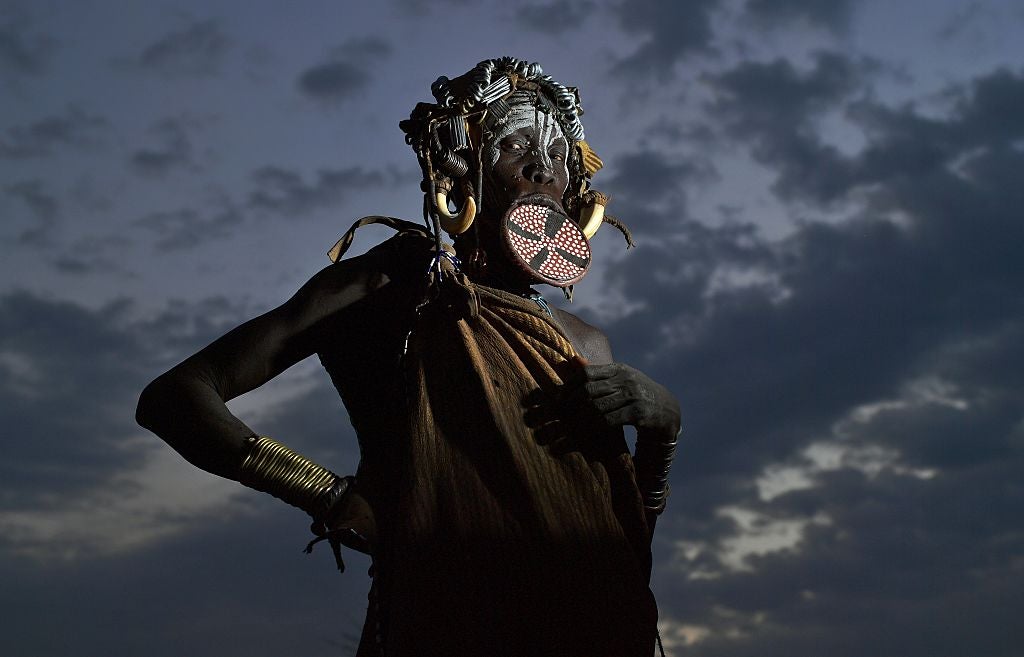
They are US-made, I’m told, gathered during the war in neighbouring Sudan. But they are not cheap,” Biwa says.
“How much do they cost?” I ask.
“Five cows.”
Beside firearms, I witness few other accommodations to the contemporary world in the Omo. Yet for a place so far off the grid, news travels fast throughout the valley. While in the Hamar village we hear word of a nearby bull-jumping ceremony. The bull jump is a ritual initiation to manhood for both the Hamar and Karo communities. We head east.
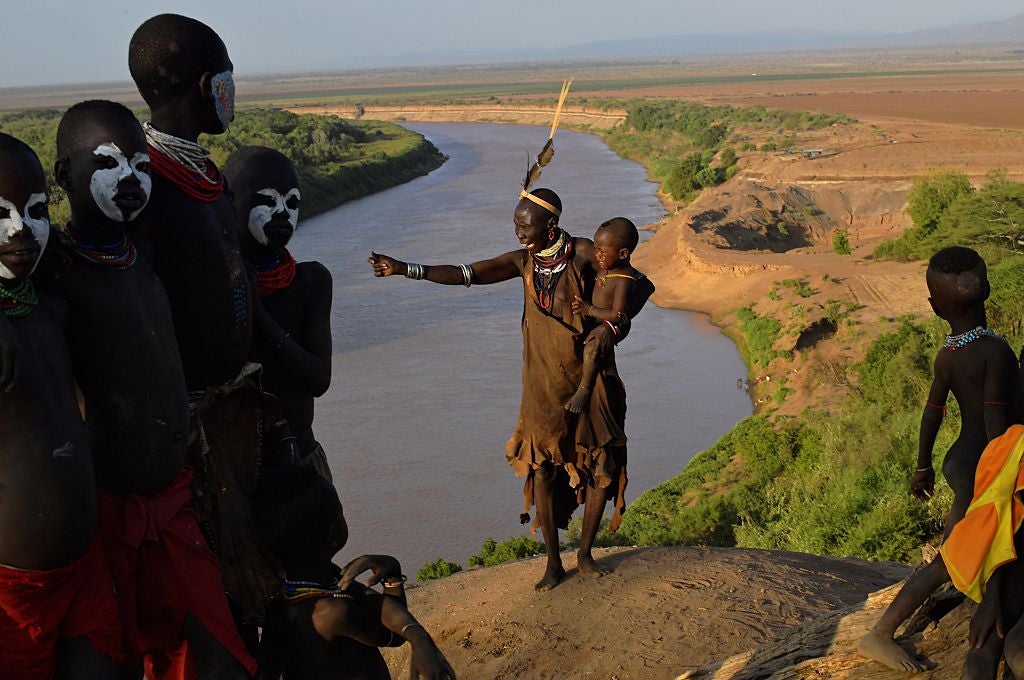
At the end of a long, deeply rutted road we come upon a dusty village in the midst of a celebration. Old men and women gather in the shade. Young men paint their faces red and white. Young women are draped in skirts and wear large bells wrapped around their calves. Their hair is ornately done in rings caked with ochre-colored mud. Each carries a small horn and blows it incessantly.
When one young woman turns away from me, I notice fresh welts on her bare back, dripping blood; she seems unaware and continued to dance. Then I see her approach a young man, stand close in front of him, and blow her horn in his face. She begins to jump up and down, her bells clanging, her horn blaring.
The young man bends to the ground and picks up a long switch, raising it over his head. The woman blows her horn more insistently, then suddenly stops. She stares at the young man. He strikes her with the whip, which snaps around her body and lashes across her back with a sharp cracking sound. She does not flinch. She lifts her horn, blows it in his face and dances away, fresh blood rising on her back.
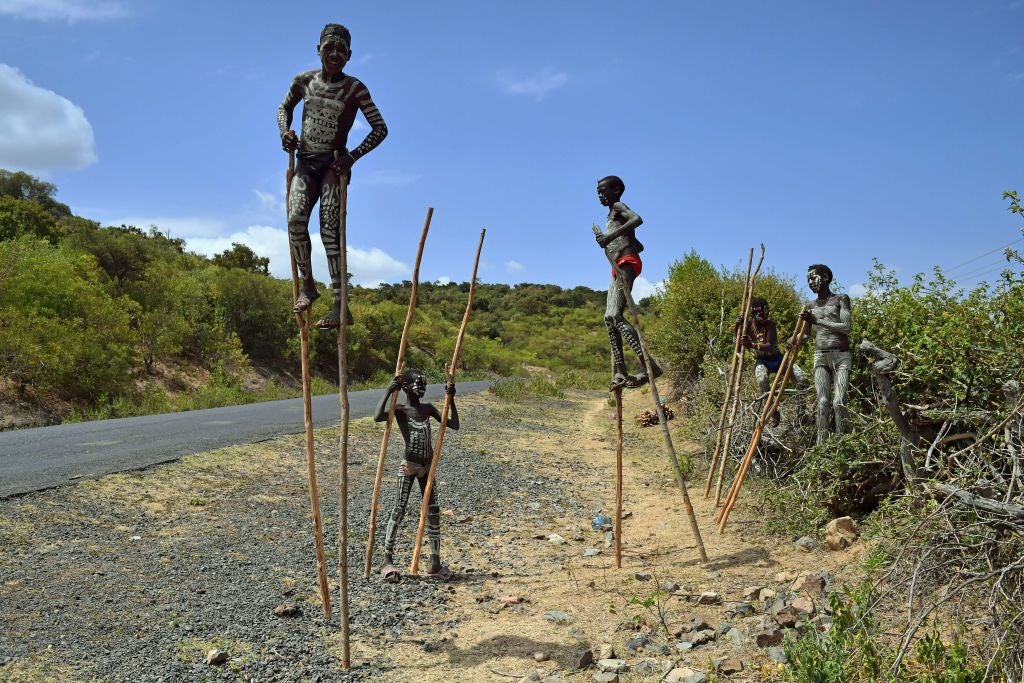
The same performance is repeated again and again by many of the young women. Their backs are covered in old scars and new welts, yet none of them display any signs of pain.
As the sun was setting, a dozen bulls are led to a clearing and aligned flank to flank. The women cluster together and begin jumping, their bells ringing out, their horns blasting. Others begin to chant. Suddenly a naked young man leaps up on the back of the first bull and races across the spine of each.
He jumps down after the last bull, but then he is up again, racing across their backs in the other direction. He repeats the back-and-forth exercise three times. If he falls, it would be a disgrace he would carry for life, Biwa warns me. But the youth never falters – the next morning he will awake a man, able to sit among the elders.
The women continue to blow their horns, and the celebration goes on into the night. We drive away under a moonless sky, the Southern Cross hanging low, silence filling our car.
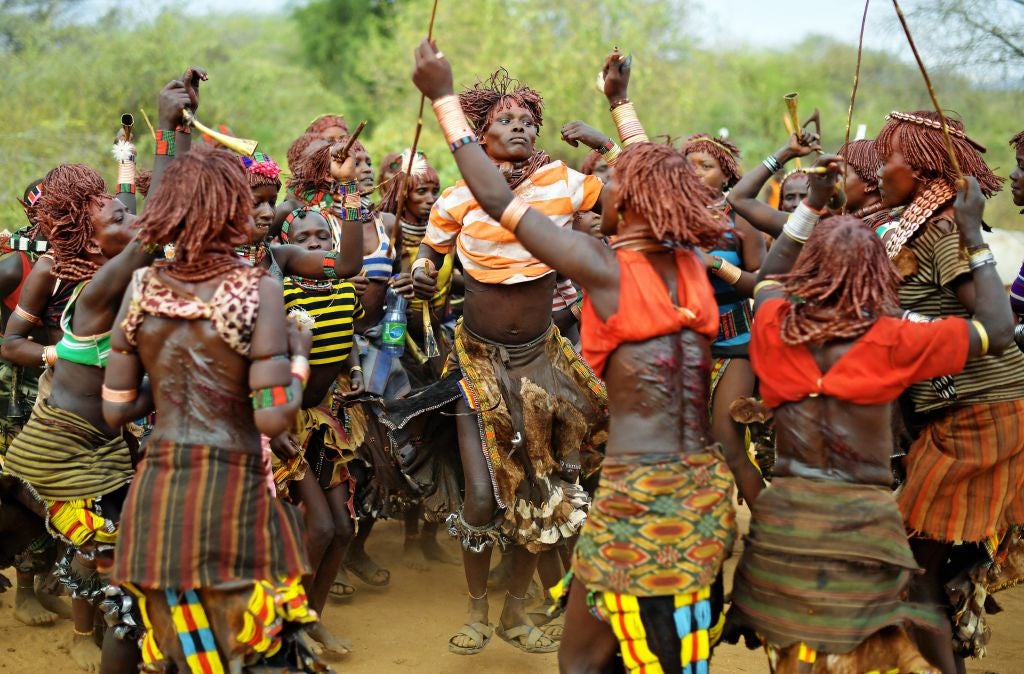
The next morning we head up river to a small village of the Nyangatom people. Relations between Karo and Nyangatom have long been strained. Intertribal conflicts over cattle rustling and grazing land have kept the valley bristling with internal strife for decades, passed down from generation to generation.
“Where we are going, this was our land until 15 years ago,” Biwa says as he throttles our engine through the brown water. “The Nyangatom are fierce fighters. They pushed us across the river. Our women tell us we are weak. Not just with their words. They dance – in front of everyone. It is a shame we wear.”
We pass large crocodiles cooling themselves on the muddy banks, their jaws resting open. Black-and-white colobus monkeys leap from branches of fig trees. A dugout canoe sits unattended on the riverbank. A Goliath heron lumbered into the air.
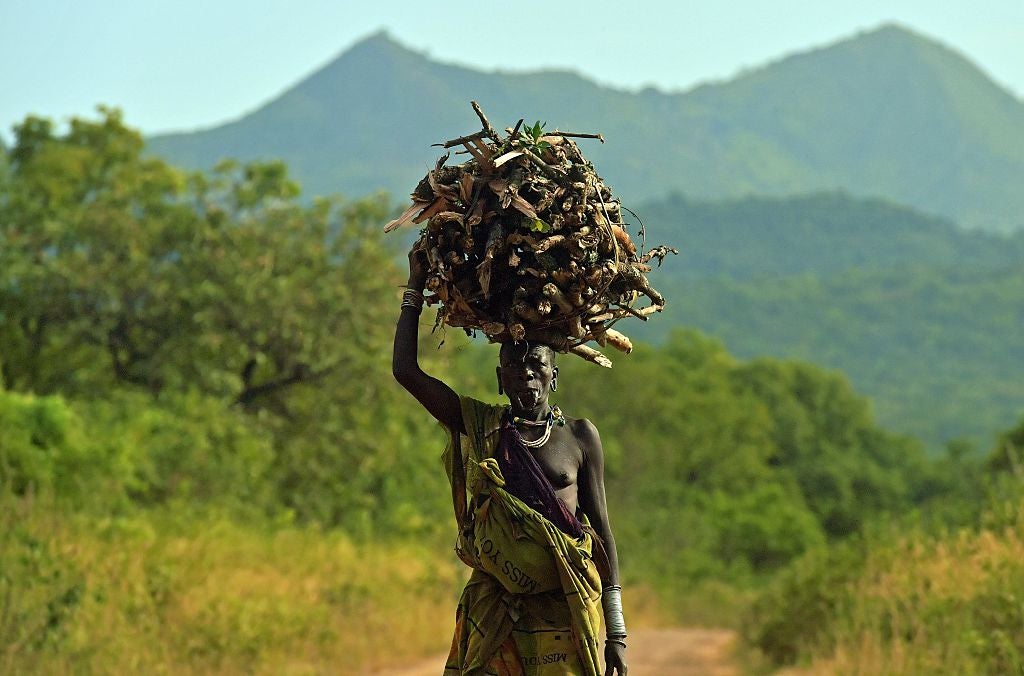
In time the heavy foliage lining the river thins, then grows sparse. Thirty-foot cliffs begin to rise up, and the landscape turns parched. Ahead, on the west bank, bony cattle are drinking from the river, kicking a choking dust high into the sky and across the sun, casting everything in an eerie patina. Atop the cliff, two men stand sentry. One has an AK-47 slung from his shoulder; the other wears what in a more urban setting might have been called a hipster hat.
The tribes wear a mishmash of clothing: brightly coloured traditional wraps, animal skins and adornments, mixed freely with Chelsea football jerseys, rakish caps and fatigue shorts – creating an all too apt picture of Africa’s disparate influences, all vying for dominance.
The men on the cliff greet us with stares, and we set out across the arid land. Distant hills of Kenya are visible to the south. Three young girls with water jugs balancing on their heads silently catch up with us. One carried the designs of scarification: small, raised scars created by rubbing charcoal in deliberately administered cuts, causing the skin to welt in intricate patterns. They make this 2-mile walk to and from the river twice daily; in Africa, carrying water is women’s work.
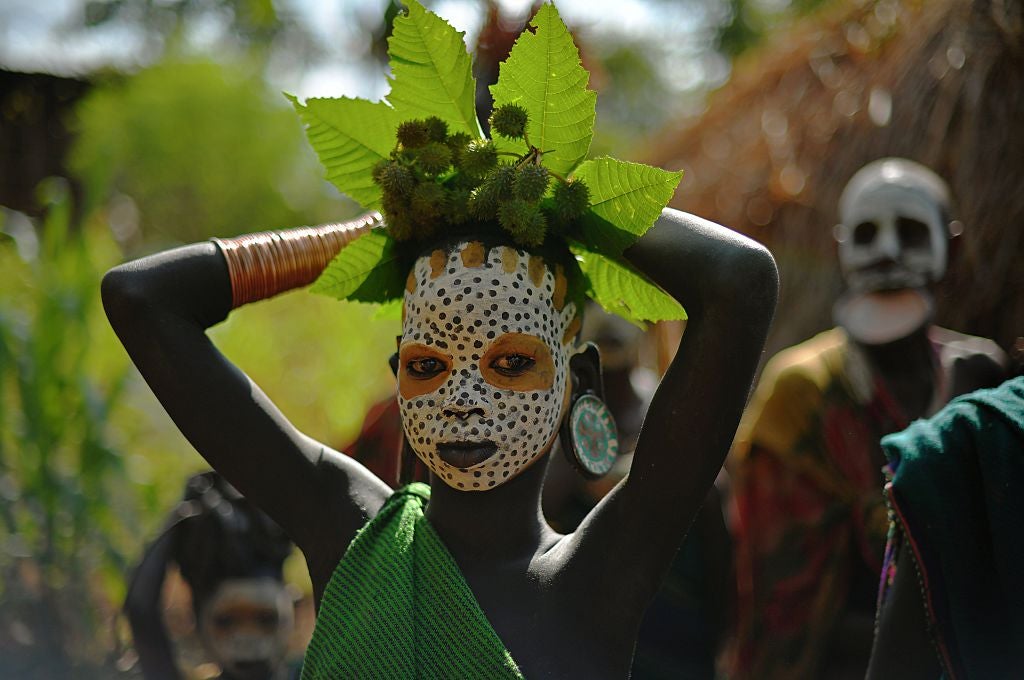
At the outskirts of the village, a half-dozen expressionless men loiter. The tallest sports a vaguely military-looking beret, worn at a jaunty angle, and an AK-47. The rest hold long sticks. Some wear rubber sandals made from scavenged truck ties; the others are barefoot.
Many Nyangatom are semi-nomadic, and this village appears haphazardly thrown together, as if built in a rush without care. There is no central meeting area, no sense of organisation. Children do not rush to greet us. We huddle with the men in the scant shade of a scraggly date tree. Cigarettes are passed around and smoked.
In time, more than a dozen women emerge from the honeycomb-shaped dwellings that look as if they could neither contain nor shelter life. One old woman begins to chant, then just as suddenly stops. All wear heavy ropes of beaded necklaces piled high, and are wrapped from the waist in once-colourful cloth, and several hold small children. Fatigue hangs in the blistering heat. It would be difficult to imagine daily life clinging closer to the edge of existence.
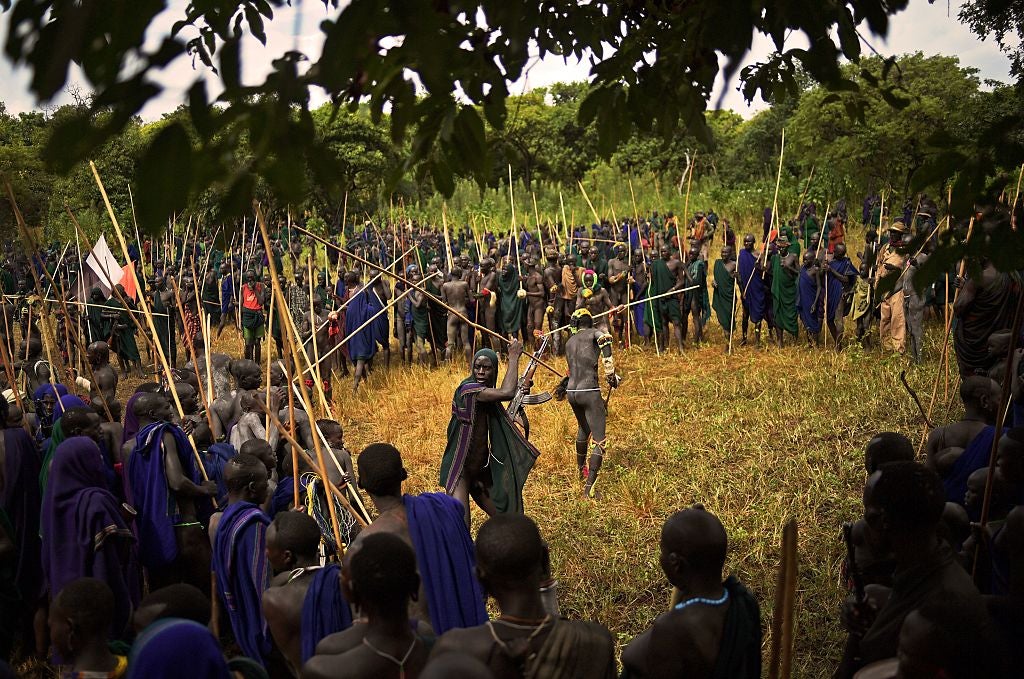
“The cradle of mankind is no Garden of Eden,” Jones says softly as we track back cross the barren land to the boat.
Back down the river, the mood is more celebratory – a ceremony is underway in Dus. Two hundred men from Biwa’s Karo community are gathering in a large semicircle on a bluff above the river. Seating is arranged from the youngest to the most senior elder. I am offered a spot in the dirt much too far along the timeline for my liking.
A bull is being roasted over an open fire in the centre of the gathering. Three men with machetes hack the animal to pieces. Chunks of meat and fat, clinging to large bones, are deposited onto small beds of leaves before the assembled. A part of the animal I couldn’t identify is dropped in front of me. The old man beside me with heavily pierced ears and a pointed stick protruding below his lower lip offers me his knife. He watches as I slice into the mysterious blob, then grins as I put it in my mouth. Just beyond the circle a dozen hooded vultures gather.
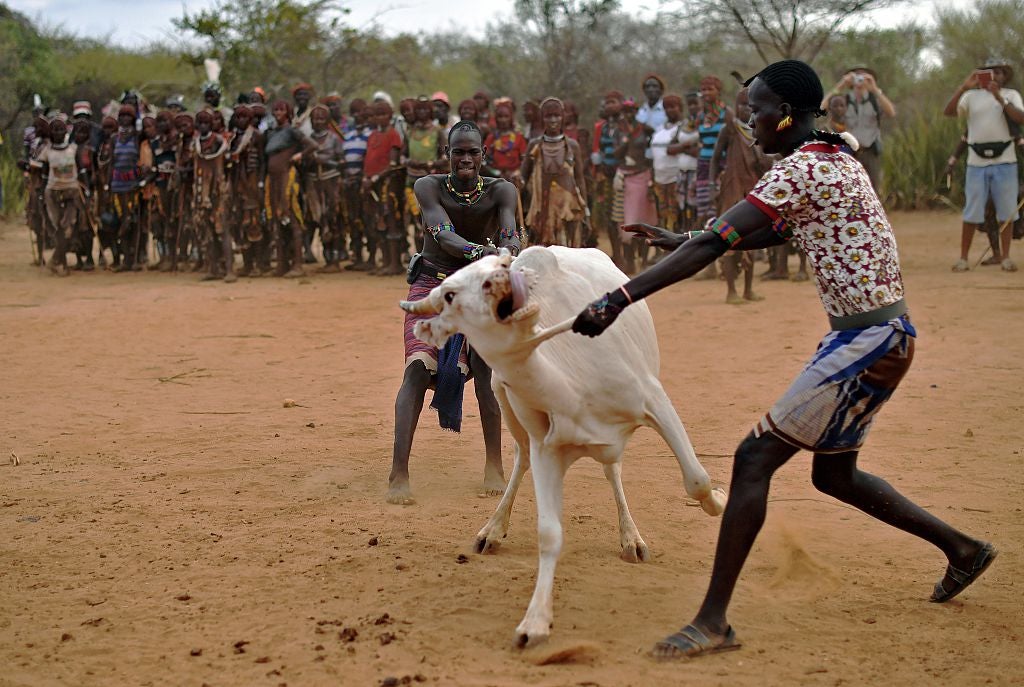
When the entire animal had been consumed, one of the elders gets up and begins to speak.
“He is making a prayer for the river to rise,” Biwa tells me.
“Don’t they know about the dam?” I ask.
“It is a difficult thing to understand,” he says.
The elder keeps talking as Biwa translates. “And now is a prayer for rain. For the women and children. A prayer that all bad feelings be carried off across the river.” After each invocation the assembled reply in a deep, guttural moan.
Finally, the three men who carved the bull slice open the only remaining part of the animal. They reach in and produce globs of warm dung and dispersed them. Each man begins to spread the excrement over his legs and across his chest in a commitment to protect those they love.
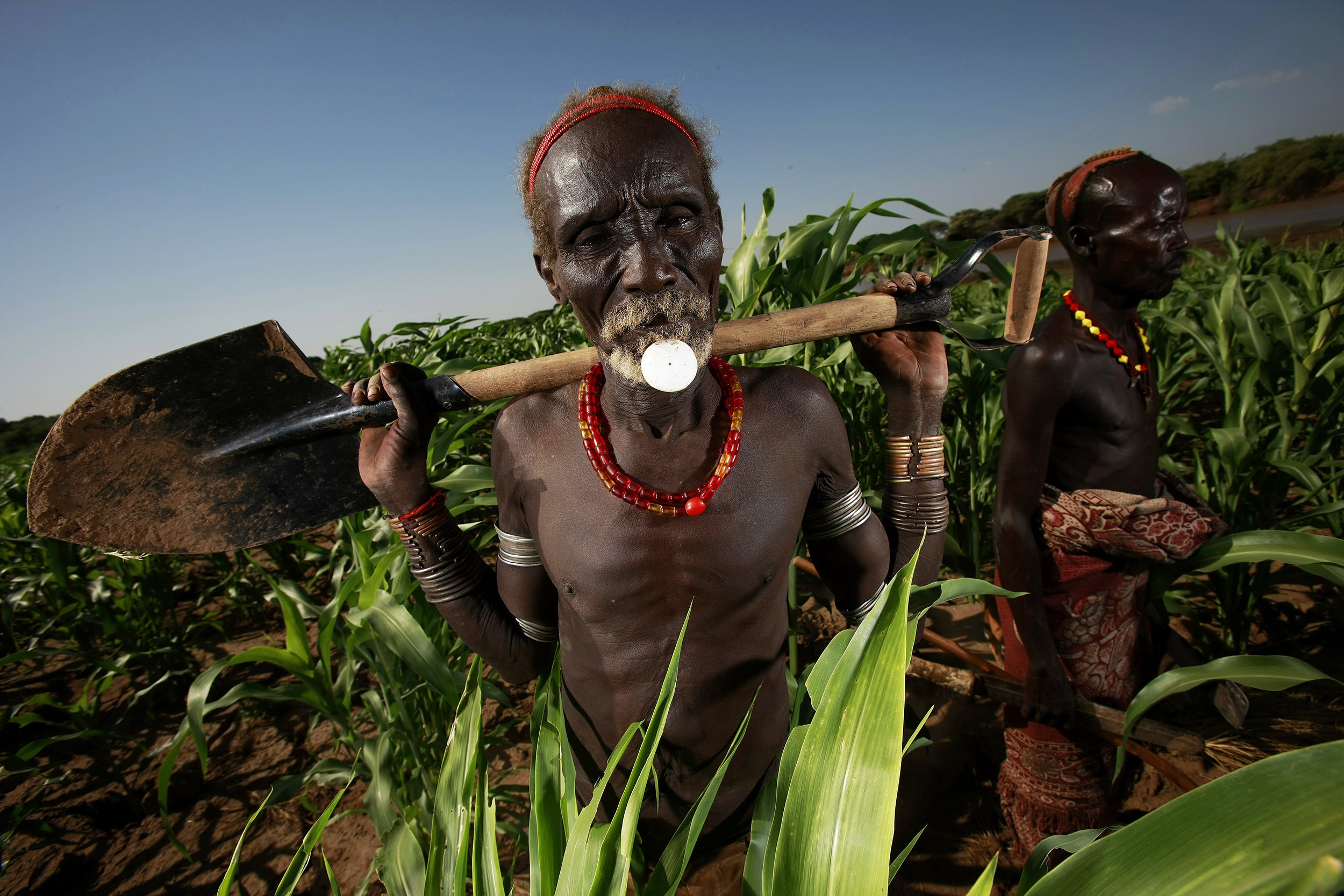
Afterward, I slip away. But hours later, in the dusk, I walk back alone from our camp and enter the village again. As is usually the case, a small child is the first to greet me. The light is fading quickly, as it does near the equator. A group of men huddle near the Parliament and Ceremony House, but otherwise the village is quiet. The small boy shadows me, and I begin to hear a loose kind of chanting. I turn toward the sound. There is a soft breeze in the gloaming; the heat is finally off the day. Then the unmistakable register of an AK-47 rings out.
I leap into the air. My head snaps in all directions, looking for the origin of the gunfire. Am I going to be shot as an intruder in the night? My young companion laughs at me. He looks directly up into the sky, indicating the direction of the shot. I try to smile, and, more slowly now, continue toward the sound of the crowd. My small friend reaches up and takes my hand. The voices become more insistent. It is nearly dark. Then I hear it again – this time, a rapid barrage of gunfire. Then another. The boy smiles in reassurance. I drop his hand and beat it back to the campsite.
The next morning, as we load the boat for our trip farther downriver, I learn that a village elder had died suddenly and that the gunfire was part of the mourning process.
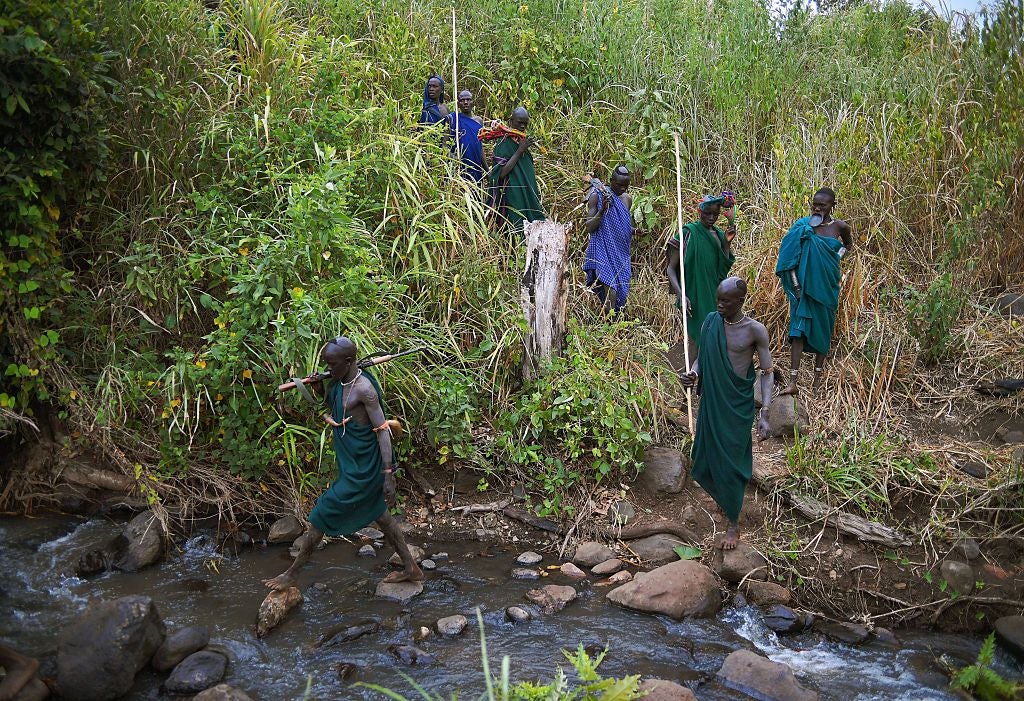
We set out before the heat of the day. For seven hours, heavy bush lines the banks. Occasionally children splash in the crocodile-infested water and villages were visible through the foliage. Baboons scamper up the steep banks. A rare Pel’s fishing owl sweep overhead. At the dire river outpost of Omorate, we have our passports inspected, pay the local graft and carry on.
“It’s a bit of a no-man’s land from here to Lake Turkana,” Jones tells me.
The heavy bush yields to a more open flood plane. Large villages of the Daasanach people, whom we have come to see, begin to line the river. These villages differ from others we have seen in the bizarre-seeming platforms, 10 feet off the ground, that have been constructed to store and protect the sorghum crop from the annual flooding – flooding now in jeopardy because of the damming upriver.
We set up camp on a high bank. The local villagers assume free run of our site, and we are absorbed into daily life. Dugout canoes, listing and overfull with people, are constantly crossing and recrossing the river. Voices carry back and forth across the water long after dark.
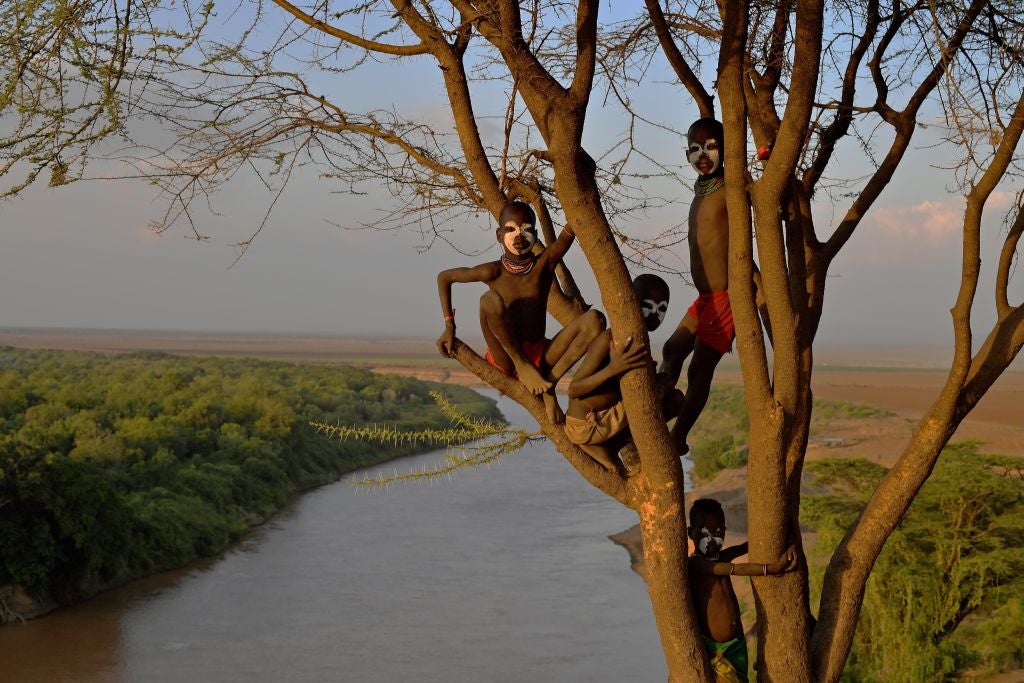
On an excursion farther downstream, the river begins to splinter. Dusty land gives way to the high grass of the delta. Soon pelicans swarm, then Lake Turkana was upon us. After the confines of life on the river, the expanse of the inland sea was daunting.
Here too, the environment is threatened. “It’s said Turkana could drop 20 feet with the dam,” Jones says. “The effect on the delta would be anyone’s guess.”
From fishermen at Turkana we learn that not far upstream, numerous Daasanach communities have begun to gather for a Dimi ceremony. They had come from miles away for an event that happens only every few years and lasts several weeks – culminating in the act of female circumcision.
We leave the boat and are immediately confronted by two dozen teenage boys, each with a bow and arrow. After an initial standoff, they happily show us the sharp tips of their weapons. We carry on across land littered with the bones of what I assume to be cattle, through heat so intense it is difficult to breathe. The earth shimmers and huts begin to materialise on the horizon.
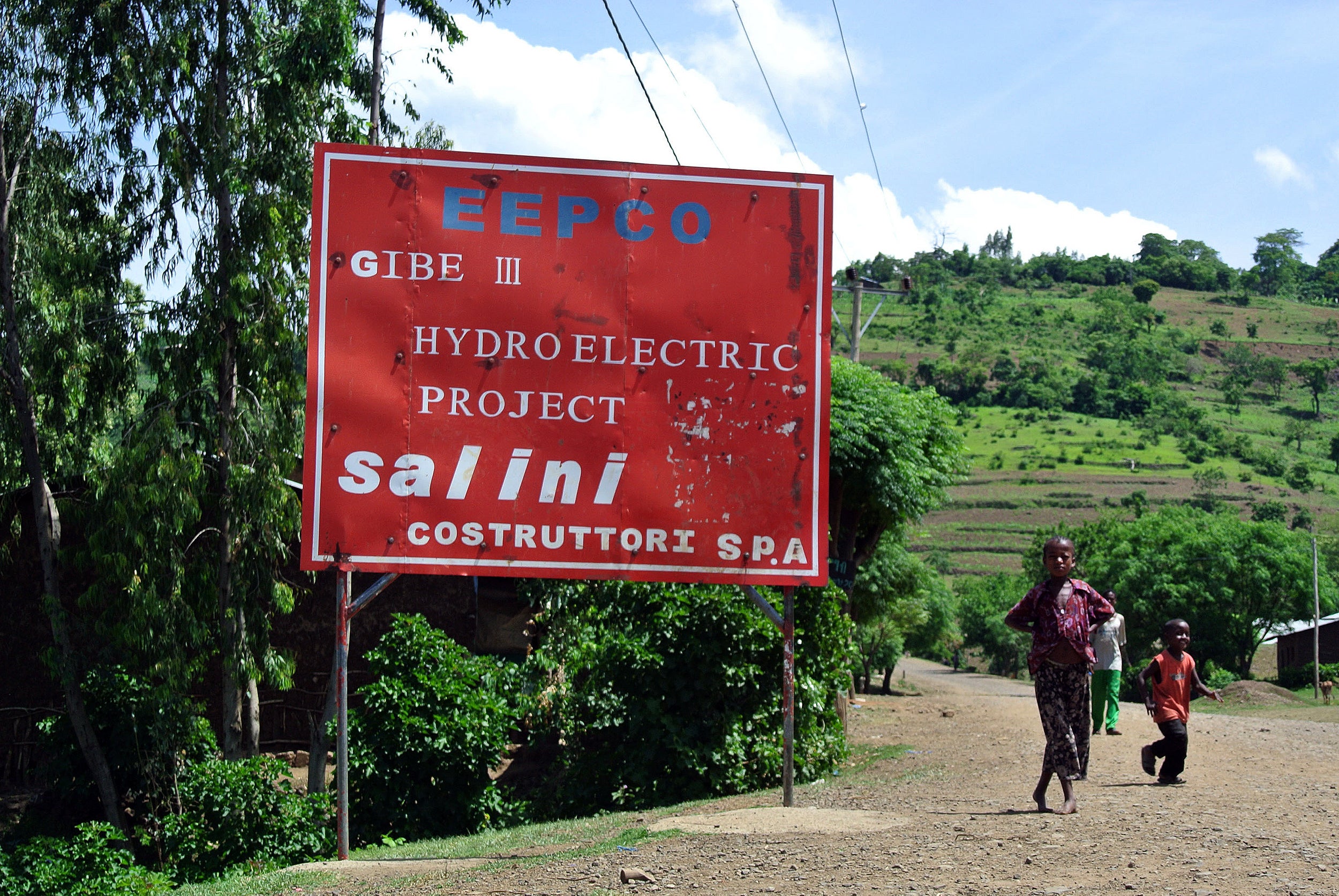
The Dimi gathering is in the early stages; only a handful of families have arrived. Outside the temporary huts are poles hung with leopard skin cloaks and ostrich plume hats for men, and colobus monkey capes for women. The skin of several people who come to greet us is already painted yellow, in preparation for the dancing that will accompany the coming ceremony.
Back by the boat I encounter a man with his entire chest and stomach covered in the well-ordered markings of scarification.
“This is to indicate that he has killed in battle,” Biwa explains.
The man glares at me. When I extend my hand to shake his, he breaks into a toothsome grin.
On our last evening, the sun is hazy near the horizon over Sudan. I walk into the village behind our site, and then keep walking to the next village, and the next. Children begin to follow. Soon they number more than a hundred. The bolder ones shake hands, some touch my hair then run away giggling. Eventually I began to chase them — the boogeyman to their delighted screams — as the sun fell.
On the way back, on the outskirts of our campsite, I come upon an old man setting fire to a dead tree near a clearing. In the morning I tell Biwa what I saw.
“It was a prayer,” he says. “A prayer for the river to rise.”
We climb into our boat and head back upstream on a river that is unlikely to do so.
© New York Times
Join our commenting forum
Join thought-provoking conversations, follow other Independent readers and see their replies
Comments